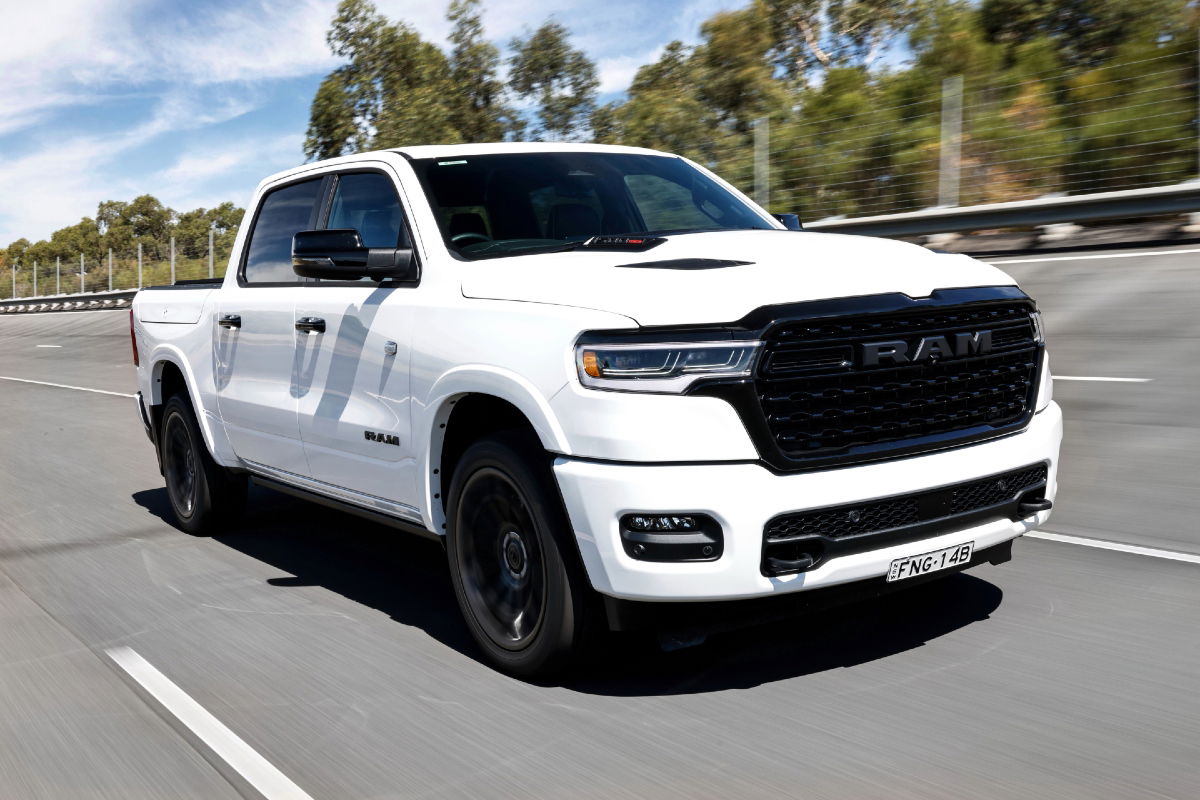Ram today announced it would be bringing the 5.7-litre ‘Hemi’ V8 back from the dead, following negative feedback from potential customers after it was dropped from the 1500.
Since the 2024 model year, the US market – and exported – facelifted 1500 DT has instead been offered with a more efficient and potent twin-turbo 3.0-litre ‘Hurricane’ six-cylinder engine, alongside the base naturally aspirated 3.6-litre ‘Pentastar’ V6.
The Hemi V8-powered Ram 1500 was a sales success in Australia, but that doesn’t make it a certainty to come back, according to the brand’s local outpost.
“The return of the Hemi V8 is a decision that has been made for the US market,” a Ram Trucks Australia spokesperson told Torquecafe.

“As it stands today, there is no guarantee the Hemi V8 will return to Australian showrooms. As with any development, we will continue to review and evaluate what options are made available to us from the vast Ram catalogue in the US.
“We know there are customers who love the sound of a V8, and the Hemi V8 is still available in our Ram 1500 Big Horn model while stock lasts. However, customers have also embraced the new Hurricane twin-turbo in-line six-cylinder engine in our latest Ram 1500 models.

“The Hurricane engine remains an integral part of Ram’s future.
“With more power and torque – and better efficiency – than the previous 5.7-litre Hemi V8, we believe the new Hurricane engine series will over time become iconic in its own right.”
While a Hemi-powered 1500 would mean the Chevrolet Silverado 1500 would once again have competition in the local V8 pickup market, the Hurricane six-cylinder is set to play an important part in the brand’s local future.
From July 1, 2025, the New Vehicle Efficiency Standard (NVES) penalties will start to be applied, which will see new cars slugged with $100 fines for every gram of CO2 per kilometre (g/km) they are above the government’s target.

Type 2 vehicles such as the Ram 1500 will first have a limit of 210g/km, reducing to 180g/km in 2026, 150g/km in 2027, 122g/km in 2028 and 110g/km in 2029. Ram last quoted the Hemi V8 – which features no technical changes upon its return – as emitting 283g/km, well above even this year’s target.
The brand is yet to provide a CO2 emissions figure for the Hurricane engine in Australia, however it consumes about three to 12 per cent less fuel, which can be roughly translated to emissions outputs of 250g/km to 275g/km.
This may not seem like a big difference, but even with annual sales of 2400 vehicles (an easy achievement for the 1500) Ram could save between $1.92 million and $7.92 million in fines alone, based on those emissions calculations.
Another possible factor holding the Hemi-powered Ram back from Australia is the cost of engineering it. While the mid-life update to add the Hurricane looked like little more than a visual update, Ram US has previously pointed out that it involved going to a new electrical architecture to support the new engine.

Given the complexities in making these changes to retrofit the Hemi, alongside the engineering required to convert the 1500 to right-hand drive, Ram might not even be able to bring the V8 back here for the next 24 months, at which point the emissions net would’ve been pulled even tighter.
As mentioned by Ram, you can still buy a Hemi-powered 1500 in Australia, as the Big Horn is currently in run-out.
The last Ram 1500 with a Hemi V8 under the bonnet rolled off the right-hand drive conversion production line in Clayton, Melbourne, on December 6, 2024 – more than six years after the first vehicle did so in June 2018.
In total, 28,495 V8-powered Ram 1500s were converted to right-hand drive in Australia. The Hurricane-powered model continues to be converted in the same facility.
Ram 1500 sales peaked in Australia at 5922 deliveries in 2023, representing more than half of all local US pickup sales at the time. The Ram 1500 has since been joined by the Chevrolet Silverado 1500, the Ford F-150 and Toyota Tundra in the pickup sales race.












Discussion about this post